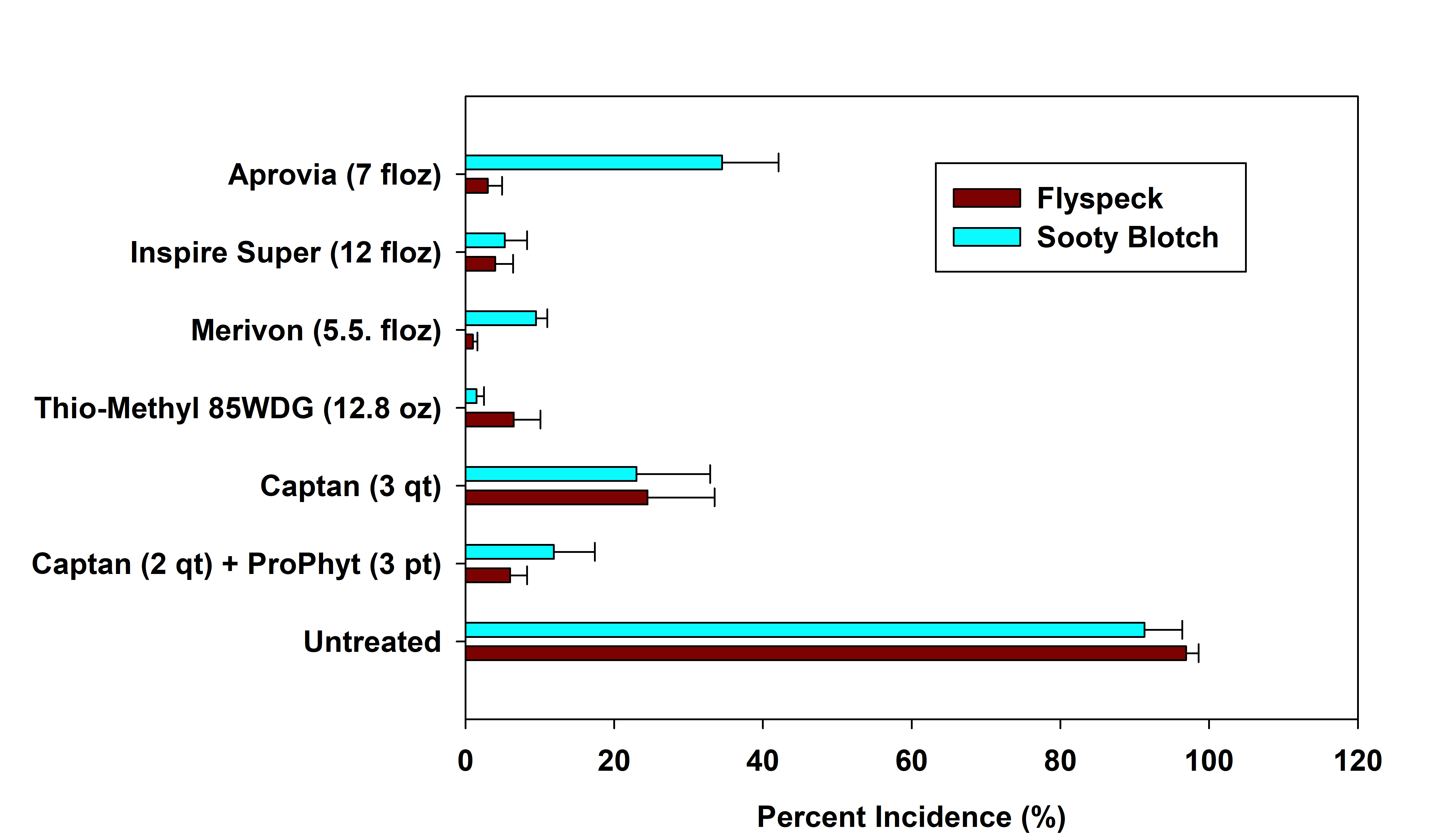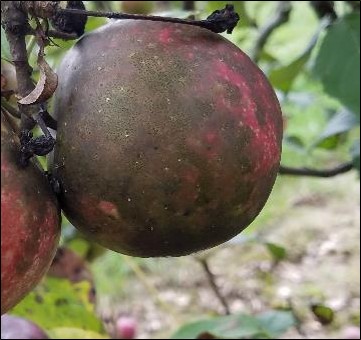Apple Disease Update: July 14, 2020
go.ncsu.edu/readext?708039
en Español / em Português
El inglés es el idioma de control de esta página. En la medida en que haya algún conflicto entre la traducción al inglés y la traducción, el inglés prevalece.
Al hacer clic en el enlace de traducción se activa un servicio de traducción gratuito para convertir la página al español. Al igual que con cualquier traducción por Internet, la conversión no es sensible al contexto y puede que no traduzca el texto en su significado original. NC State Extension no garantiza la exactitud del texto traducido. Por favor, tenga en cuenta que algunas aplicaciones y/o servicios pueden no funcionar como se espera cuando se traducen.
Português
Inglês é o idioma de controle desta página. Na medida que haja algum conflito entre o texto original em Inglês e a tradução, o Inglês prevalece.
Ao clicar no link de tradução, um serviço gratuito de tradução será ativado para converter a página para o Português. Como em qualquer tradução pela internet, a conversão não é sensivel ao contexto e pode não ocorrer a tradução para o significado orginal. O serviço de Extensão da Carolina do Norte (NC State Extension) não garante a exatidão do texto traduzido. Por favor, observe que algumas funções ou serviços podem não funcionar como esperado após a tradução.
English
English is the controlling language of this page. To the extent there is any conflict between the English text and the translation, English controls.
Clicking on the translation link activates a free translation service to convert the page to Spanish. As with any Internet translation, the conversion is not context-sensitive and may not translate the text to its original meaning. NC State Extension does not guarantee the accuracy of the translated text. Please note that some applications and/or services may not function as expected when translated.
Collapse ▲In the previous Disease Update I sent a basic spray schedule for Glomerella leaf spot/bitter rot management for early-, mid-, and late- harvest varieties. In this schedule, please take note that in general, Captan + Ziram is rotated every 7 to 10 days with Captan + Prophyt (or equivalent phos. acid fungicide) or Captan + a single site fungicide such as thiophanate-methyl (e.g., Topsin). Of course,this is beyond that of applying a stroby-containing fungicide (blue or purple color code, e.g. Flint or Merivon) which should be incorporated at this point in the season prior to a predicted heavy rain period and in the immediate pre-harvest period.
While we have not observed a benefit in our fungicide trials of adding ProPhyt in tank mixture with a 3/4 rate of captan (on a 7 to 10 day spray interval), in regards to GLS and bitter rot control, the addition of a phos. acid or single-site fungicide with captan at least every other spray may be important for flyspeck/sooty blotch management. In addition to evaluating the efficacy of summer fungicide programs (petal fall to harvest) against GLS and bitter rot, we also take harvest data on flyspeck and sooty blotch incidence (see graph below). Fungicide applications commenced at 50% petal fall and continued on 7 to 10-day intervals until harvest on 21-yr-old ‘Tenroy Gala’ grafted to M7 rootstock. All programs were “non-rotational” meaning that within a treatment, the same fungicide was applied throughout the entire season. Nope, this is not considered a legal commercial program, but we wanted a direct comparison across different fungicide groups.
 As you can see from the untreated program, there was high disease pressure as greater than 90% incidence was observed for both flyspeck and sooty blotch (FSSB) Including ProPhyt with captan reduced the incidence of flyspeck and significantly reduced the incidence of sooty blotch compared to captan applied alone. Incorporating a DMI fungicide such as Inspire Super or thiophanate-methyl provided the greatest control against FSSB, whereas other fungicides containing active ingredients in other FRAC groups (e.g. Aprovia, Merivon) tended to reduce the incidence of flyspeck to a much greater extent than sooty blotch.
As you can see from the untreated program, there was high disease pressure as greater than 90% incidence was observed for both flyspeck and sooty blotch (FSSB) Including ProPhyt with captan reduced the incidence of flyspeck and significantly reduced the incidence of sooty blotch compared to captan applied alone. Incorporating a DMI fungicide such as Inspire Super or thiophanate-methyl provided the greatest control against FSSB, whereas other fungicides containing active ingredients in other FRAC groups (e.g. Aprovia, Merivon) tended to reduce the incidence of flyspeck to a much greater extent than sooty blotch.
To simplify things, I’d consider adding “something” to captan every other spray. However, if you’d prefer to be more exact on your timings, NEWA has a FSSB model available for your enjoyment: Apple Diseases. If you want some further info check out this FSSB post by Rachel Kreis from 2018.
Lastly, we’ve been receiving several reports of bitter rot outbreaks on Honeycrisp. Given the cultivar this isn’t necessarily surprising-although with the fungicide programs of apple growers here in NC this shouldn’t be happening. If you do notice control failures please let me know ASAP and we’ll head out and collect some samples for species ID and a fungicide sensitivity profile.



